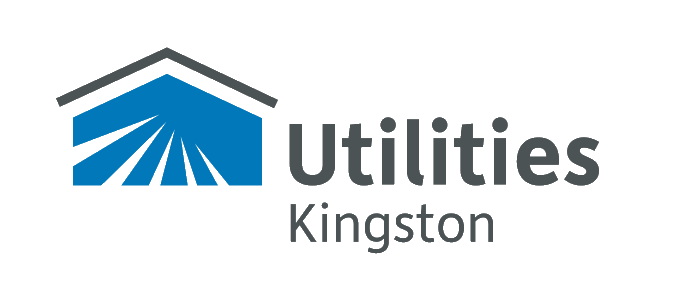2018 Achievements
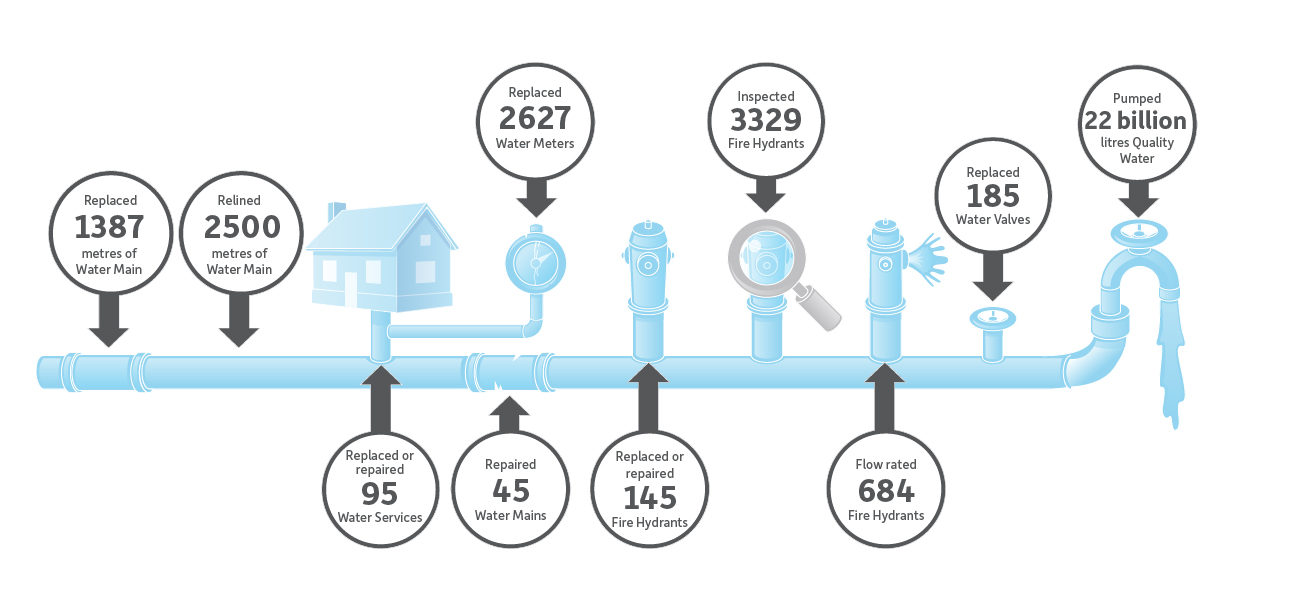 Click to enlarge
Click to enlarge
What's the context?
We've provided data on our achievements in 2018. If you're looking for additional context on how much overall infrastructure we maintain, check out our overview infographics.
Highlights
Internal Resources for Water Meter Replacement
In 2018, we continued to improve asset management of water meters as we replaced 2,627 out of approximately 38,621 water meters. This program will help us keep meters up-to-date to ensure accurate, reliable metering of the water consumed by our customers.
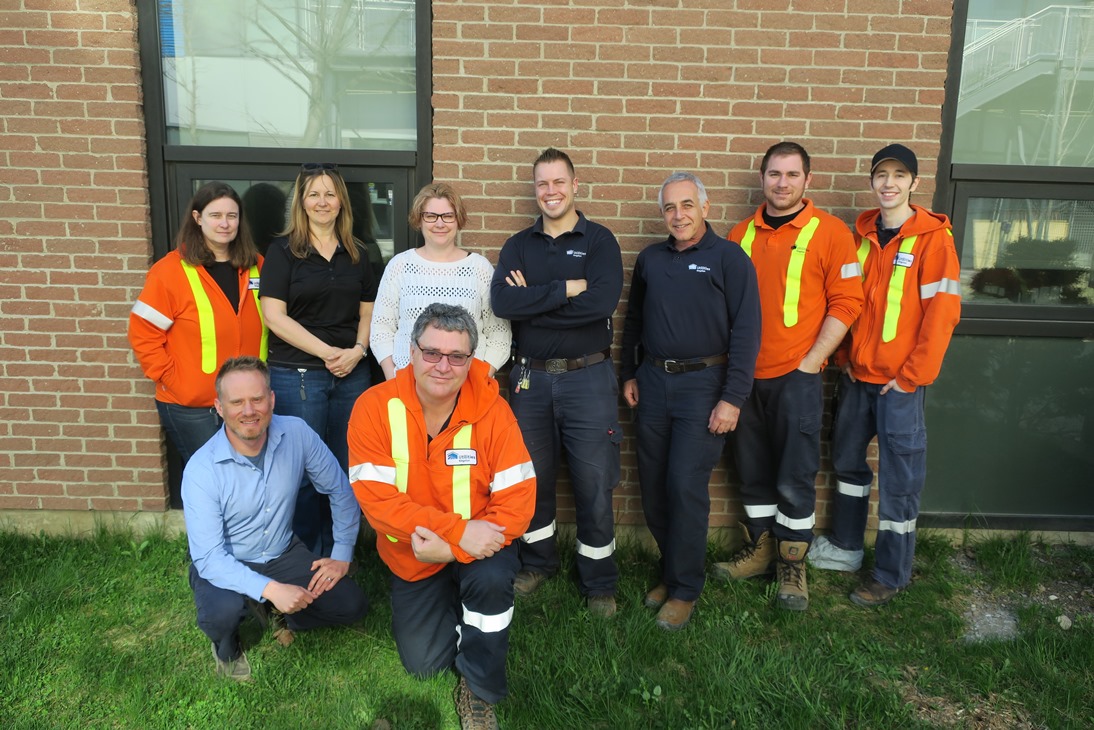
Ensuring Reliable Water Distribution and Fire Protection
3,329
Fire Hydrants Inspected
Out of 3,456
684
Fire Hydrants
Flow Rated
In 2018, there was a focus on water distribution system maintenance that included valve operation and maintenance, hydrant inspection and maintenance, and water service renewal.
To help support fire protection, a particular focus was placed on inspecting and flow rating fire hydrants. We inspected all fire hydrants, except those that were inaccessible, for example, due to construction.
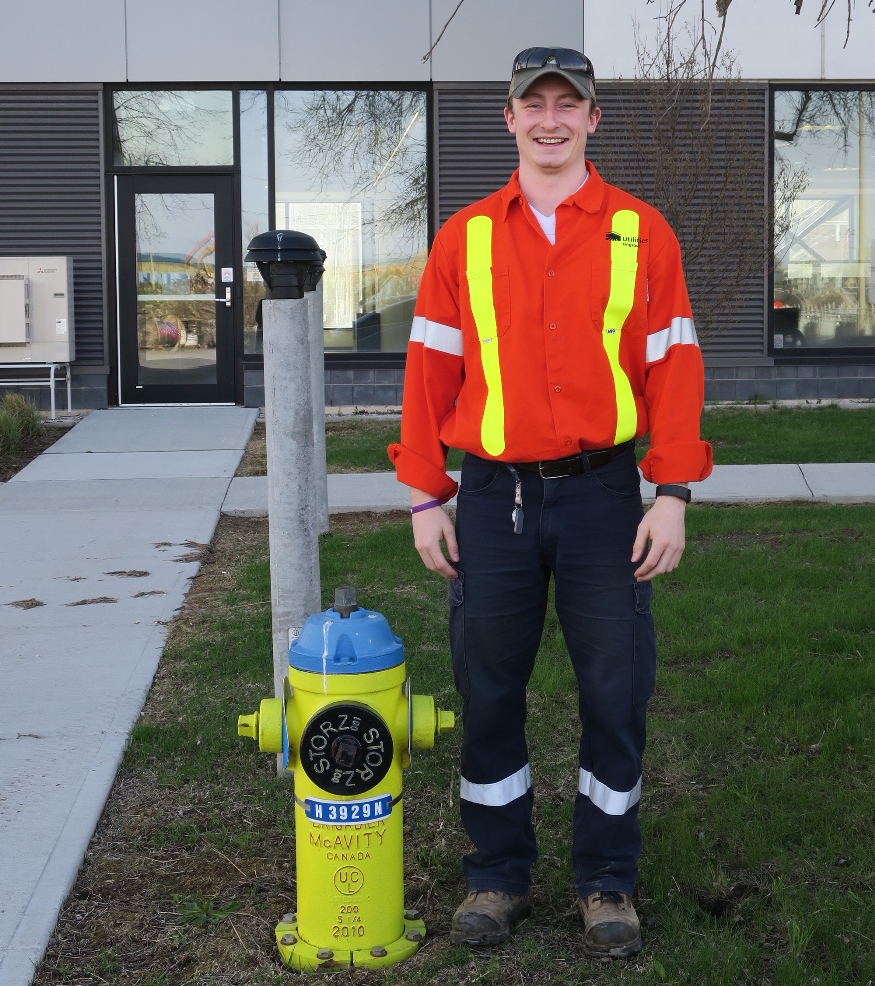
The 2018 program employed four summer students, who are provided with the required skills, training and certification, further developing youth employment in Kingston. Pictured is Hayden Hulton.
Infrastructure Upgrades
Tower Street Water Tower
In 2017, we completed an engineering condition assessment on this 60-year-old critical drinking water infrastructure, located on Tower Street. This included a thorough review of structural elements, current code compliance, foundations, and coatings. In general, the tower was found to be in good condition and structurally sound. In order to protect the steel from corroding and extend the life of the infrastructure, we identified the need to remove and replace the exterior paint.
With the exception of touch-ups, concrete repair and restoration, the work to paint the Tower Street Water Tower was completed in 2018. The tower has been refilled and is back in full operation.
The contractor erected a containment system and used sandblasting to safely remove the exterior paint on the oldest municipal water tower in Kingston, before applying five coats (total) of zinc, epoxy, white urethane and high gloss urethane.
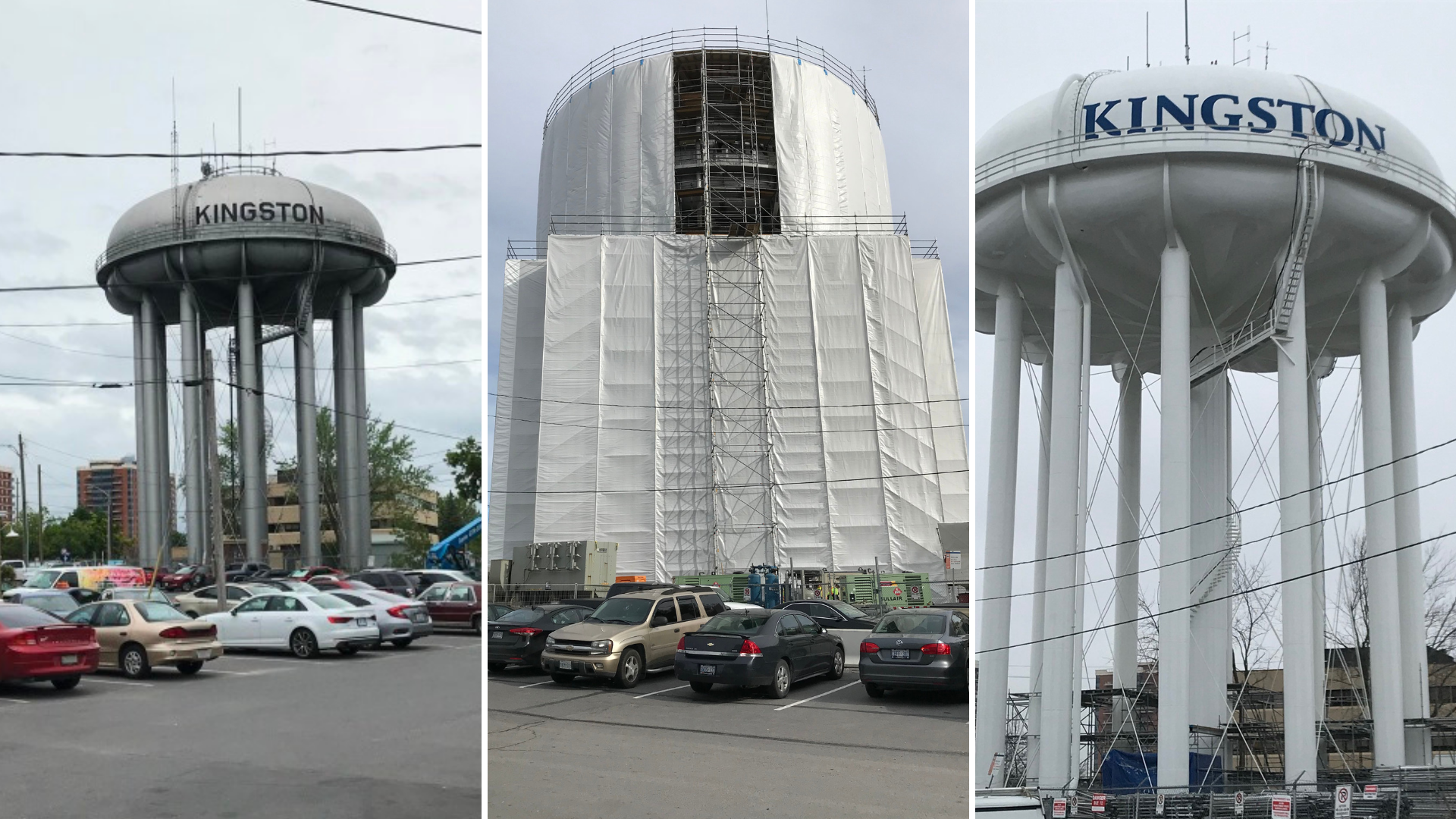
Upgrades Complete: James Street Water Booster Station
The $5.1 million upgrades to the James Street Water Booster Station were completed in 2018 and will accommodate 20-year population growth projections.
This booster station conveys water to the system east of the Cataraqui River and is located in the Barriefield Heritage Conservation District. The upgrades were needed to replace ageing infrastructure and ensure adequate supply of water for the East Water System.
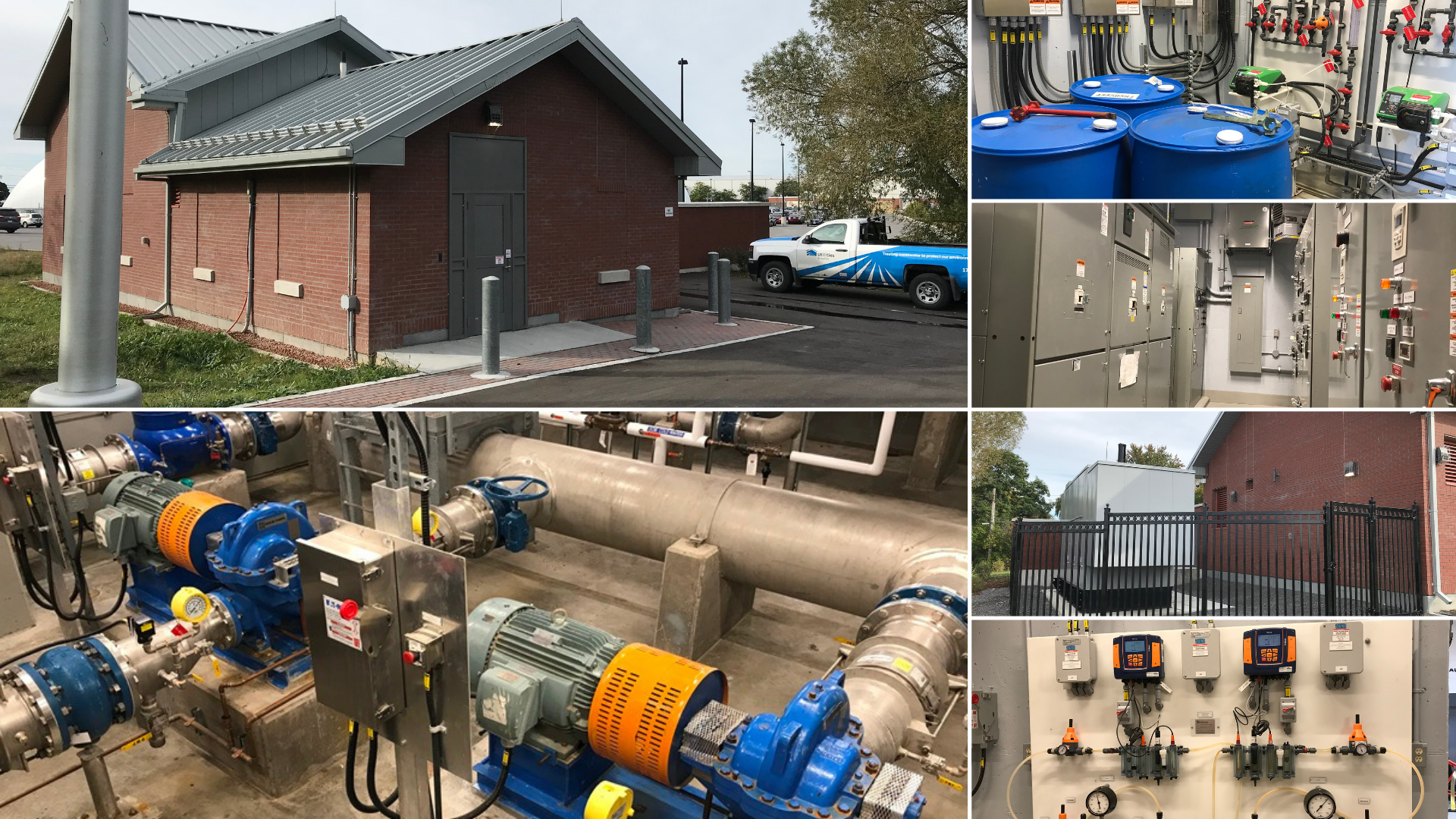
New Water Main for King Street
The seven inch (yes that is an oddball size), 340 metre cast iron water main on King Street, from Emily to West, was originally installed in 1895 and had certainly reached the end of its useful life. To help ensure reliable water service (including for fire protection), this water main was replaced in 2018. We thank the citizens of Kingston for your cooperation, as this work took place in a particularly busy area.
Environment: Trunk Water Main Install
A number of new trunk water mains where identified in the Water Master Plan. With funding from both the federal and provincial governments, Utilities Kingston moved several of these installations forward, including a 600 mm main on Taylor Kidd Boulevard, from Bayridge easterly to just short of Old Colony.
In 2018, the connection was completed through to the Blackburn Mews area, involving an innovative approach using directional drilling equipment. This allowed us to extend the main under a branch of the Cataraqui Creek without disrupting flows, or otherwise creating environmental impact.
Regulation and Legislation
Annual Reports on Drinking Water Quality
Utilities Kingston released the 2018 annual reports on drinking water quality in accordance with Section 11 of Ontario Regulation 170/03. Annual reports outline water quality status at the three water treatment facilities and the water distribution systems operated by Utilities Kingston.
In 2018, we received a 100 per cent rating from the Ministry of Environment, Conservation and Parks on our drinking water inspection, which confirms we are meeting the water quality standards.
Our activities to ensure water quality included the following:
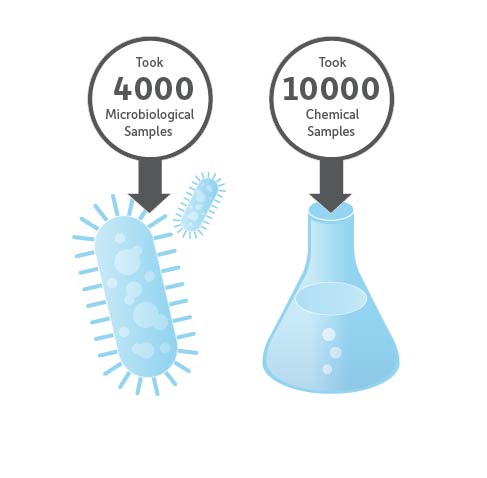
Cross Connection Control
As of 2018, Utilities Kingston monitors the annual testing and maintenance of nearly 3,500 approved backflow prevention devices, up from 3,000 devices in 2017. These devices are mostly for premises isolation, and some internal protection and residential irrigation. In 2018, 503 new devices were installed in industrial, commercial, institutional (ICI) and multi-residential buildings.
The program was first implemented in Kingston in 2012. Since then, over half of the approximately 4,000 ICI facilities identified have put premises isolation backflow prevention devices in place, are working on installation, or have a survey pending. We initially focused on the most severe-hazard connections like hospitals, car washes, morgues and dental offices. These facilities now all have premises isolation in place and we continue to work with moderate-hazard connections such as restaurants, stores, offices and multi-residential buildings.
Background
In accordance with the Water By-law No. 2006-122 Part 3 - Cross Connections/Backflow Prevention, the Utilities Kingston Cross Connection Control Program is in effect. It addresses actual or potential connections between the City’s water infrastructure and a source of pollution or contamination that could change the drinking water supply quality.
Through this program, we identify moderate- and severe-hazard cross connections, where potential contamination of potable water may occur, and we enforce installation and yearly testing of backflow prevention devices. When properly installed, cross connection control devices ensure that water will never flow from the customer’s facilities into the distribution system.
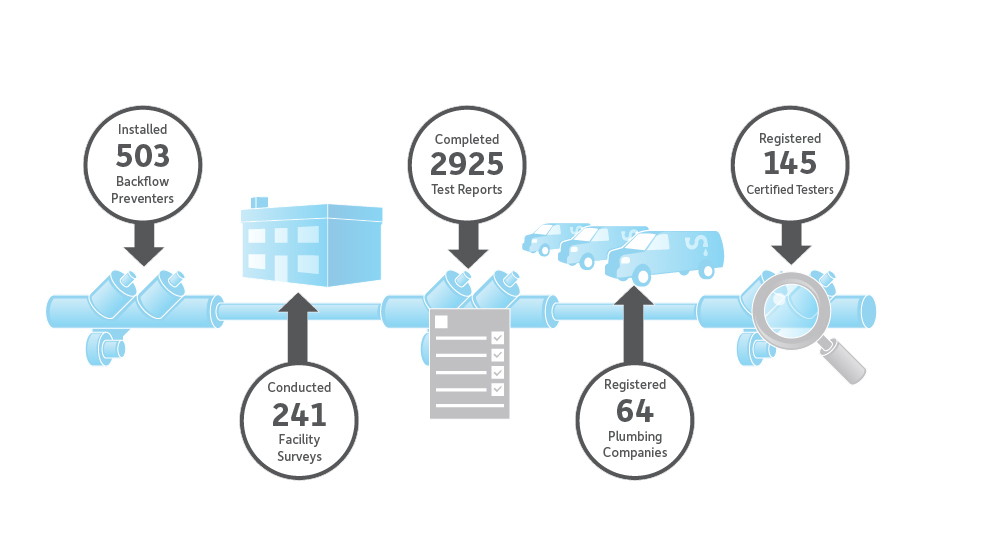 Click to enlarge
Click to enlarge
89
Homes and Businesses
had their Drinking Water
Tested for Lead
An increase of 68 from previous year,
due to changing sampling requirements.
Community Lead Testing Volunteers
Help safeguard our water, from source to tap
Protecting our drinking water is a shared responsibility. Thank you to our customers who volunteer in the community lead testing program and help keep drinking water safe and clean.
Under the Provincial Regulation 170/03 (Safe Drinking Water Act), the Ministry of the Environment and Climate Change requires owners of municipal residential drinking water systems to conduct lead testing of water taken from both plumbing (pipes inside the home or building) and distribution locations (pipes leading to the home or building). The municipality has been regulated to conduct lead testing over the past decade. During this time, Utilities Kingston has typically not found any issues with elevated lead levels in drinking water.
Full Scope Accreditation
In 2018, the required internal auditing process was completed with one minor non-conformance identified. It related to changes to the organizational structure as outlined in our Operational Plan, which is being updated.
In 2011, we received full scope accreditation for a successful Drinking Water Quality Management System (DWQMS). The issuance of the certificates of accreditation is the final step in meeting the initial requirements of the Safe Drinking Water Act. The accreditation process is ongoing and requires yearly audits that demonstrate continuous diligence in continuous improvement in water treatment and supply.
This accreditation demonstrates that Kingston’s water treatment and distribution systems meet the requirements set out in provincial quality water management legislation. It is a testament to our commitment to water quality and the provision of safe and reliable water to our customers.
Annual Inspections
In 2018, the Ministry of the Environment and Climate Change completed annual inspections of all the water treatment systems operated by Utilities Kingston. For 2018, we received a 100 per cent rating for meeting the safety, operational, and compliance requirements under Ontario’s drinking water regulations.
Water by the Numbers
21.9B
Total Water
Pumped (L)
0.5B from
previous year
39K
Homes and Businesses Served
364 from
previous year
4,000
Microbiological
Samples
120 of regulated requirement
10K
Chemical
Samples
200 of regulated requirement
Financials
Check out our webpage on conservation to learn about our customers’ accomplishments in saving water.
